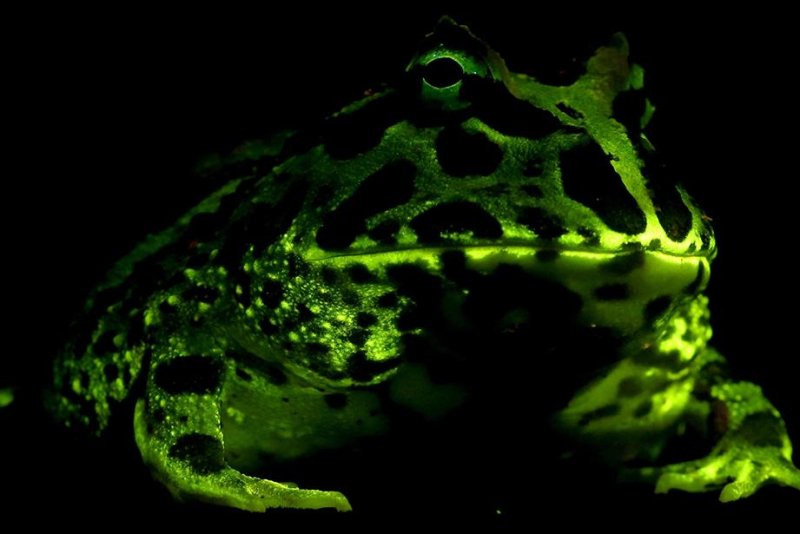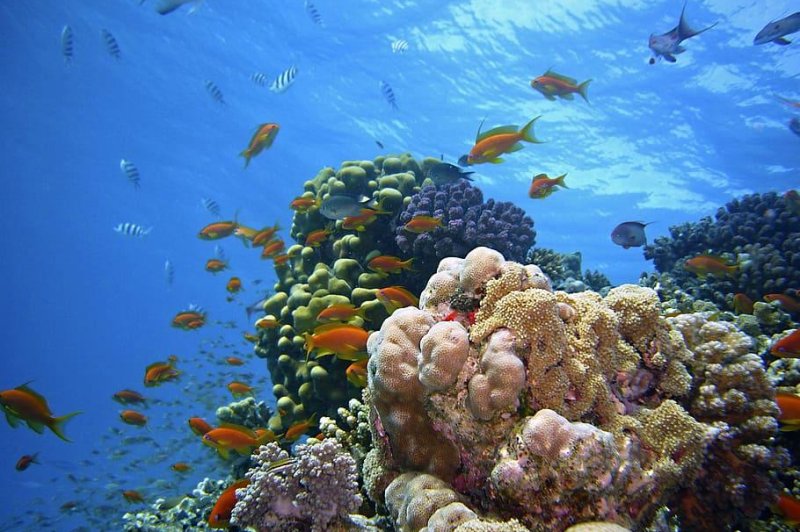A New Section Of US Attorneys Is Being Created To Strip Naturalized Citizenship From Suspected Fraudsters
Experts said the move appeared to be another symbolic effort aimed at targeting immigrants.

Manuel Balce Ceneta / Associated Press
People are sworn in as new citizens of the United States during a special naturalization ceremony for 50 new Americans at the State Department in 2007.
The Department of Justice is creating a new section of attorneys to handle cases aimed at stripping naturalized citizenship from people suspected of fraud, officials announced Wednesday.
The move will likely inspire increased fear in immigrant communities already on edge over the Trump administration’s immigration restrictions.
DOJ officials framed the creation of the Denaturalization Section, which will be housed in the civil Office of Immigration Litigation, as an effort to crack down on an increase in cases of those who have engaged in fraud, human rights violations, sexual offenses, and other crimes.
“When a terrorist or sex offender becomes a U.S. citizen under false pretenses, it is an affront to our system—and it is especially offensive to those who fall victim to these criminals,” Assistant Attorney General Jody Hunt said in a statement. “The Denaturalization Section will further the Department’s efforts to pursue those who unlawfully obtained citizenship status and ensure that they are held accountable for their fraudulent conduct.”
Justice Department lawyers have filed 94 denaturalization cases since 2017 and the agency’s annual filing rate has shot up by 200% over the past three years, according to a DOJ official. During that same period, there has been a 600% increase in case referrals from DHS.
DOJ officials said in a statement that “the growing number of referrals anticipated from law enforcement agencies motivated the creation of a standalone section dedicated to this important work.” Individuals can have their citizenship stripped if the government proves that naturalization was illegally received or if it was “procured by” lying or concealing a fact like a previous crime.
In its announcement of the new section, justice officials highlighted successful denaturalizations, including a person who had allegedly been associated with terrorist groups, another who had been prosecuted for executing people in Bosnia, and four people who had falsely claimed to be a family in order to gain visas.
Experts said the move appeared to be another symbolic effort aimed at targeting immigrants.
“While this effort may result in relatively few denaturalizations, it shows that the administration’s desire to keep immigrants ‘looking over their shoulder’ extends past legalization and even naturalization. If you weren’t born here, this administration is trying to keep you uncomfortable,” said Sarah Pierce, a policy analyst at the Migration Policy Institute.
In 2018, US Citizenship and Immigration Services officials announced that they would increase their focus on denaturalization cases from an operation that began years ago, including under the Obama administration, that inspected cases of potential fraud. USCIS officials at the time said they would look to refer more than 1,000 cases to the justice department.
Under Operation Janus, officials had found that hundreds of thousands of fingerprints were missing from a centralized fingerprint system. The government believed some individuals may have “have sought to circumvent criminal record and other background checks in the naturalization process.” Government officials had found that more than 800 people were granted citizenship even though they had been ordered deported under a different identity.
Experts said the move appeared to be another symbolic effort aimed at targeting immigrants.

Manuel Balce Ceneta / Associated Press
People are sworn in as new citizens of the United States during a special naturalization ceremony for 50 new Americans at the State Department in 2007.
The Department of Justice is creating a new section of attorneys to handle cases aimed at stripping naturalized citizenship from people suspected of fraud, officials announced Wednesday.
The move will likely inspire increased fear in immigrant communities already on edge over the Trump administration’s immigration restrictions.
DOJ officials framed the creation of the Denaturalization Section, which will be housed in the civil Office of Immigration Litigation, as an effort to crack down on an increase in cases of those who have engaged in fraud, human rights violations, sexual offenses, and other crimes.
“When a terrorist or sex offender becomes a U.S. citizen under false pretenses, it is an affront to our system—and it is especially offensive to those who fall victim to these criminals,” Assistant Attorney General Jody Hunt said in a statement. “The Denaturalization Section will further the Department’s efforts to pursue those who unlawfully obtained citizenship status and ensure that they are held accountable for their fraudulent conduct.”
Justice Department lawyers have filed 94 denaturalization cases since 2017 and the agency’s annual filing rate has shot up by 200% over the past three years, according to a DOJ official. During that same period, there has been a 600% increase in case referrals from DHS.
DOJ officials said in a statement that “the growing number of referrals anticipated from law enforcement agencies motivated the creation of a standalone section dedicated to this important work.” Individuals can have their citizenship stripped if the government proves that naturalization was illegally received or if it was “procured by” lying or concealing a fact like a previous crime.
In its announcement of the new section, justice officials highlighted successful denaturalizations, including a person who had allegedly been associated with terrorist groups, another who had been prosecuted for executing people in Bosnia, and four people who had falsely claimed to be a family in order to gain visas.
Experts said the move appeared to be another symbolic effort aimed at targeting immigrants.
“While this effort may result in relatively few denaturalizations, it shows that the administration’s desire to keep immigrants ‘looking over their shoulder’ extends past legalization and even naturalization. If you weren’t born here, this administration is trying to keep you uncomfortable,” said Sarah Pierce, a policy analyst at the Migration Policy Institute.
In 2018, US Citizenship and Immigration Services officials announced that they would increase their focus on denaturalization cases from an operation that began years ago, including under the Obama administration, that inspected cases of potential fraud. USCIS officials at the time said they would look to refer more than 1,000 cases to the justice department.
Under Operation Janus, officials had found that hundreds of thousands of fingerprints were missing from a centralized fingerprint system. The government believed some individuals may have “have sought to circumvent criminal record and other background checks in the naturalization process.” Government officials had found that more than 800 people were granted citizenship even though they had been ordered deported under a different identity.
Hamed Aleaziz is a reporter for BuzzFeed News and is based in San Francisco.
Last updated on February 26, 2020
Pew Research Center: 1 in 10 eligible voters in 2020 are naturalized citizens

Naturalized U.S. citizens make up 10 percent of the eligible voting population, a Pew Research Center report revealed on Wednesday. Photo by Matthew Healey/UPI | License Photo
Feb. 26 (UPI) -- One in 10 eligible voters in 2020 are naturalized U.S. citizens, a Pew Research Center study released Wednesday said.
Combined, immigrants born in Mexico, the Philippines, India, China, Vietnam, Cuba, Korea, the Dominican Republic, Jamaica and El Salvador, account for about half of all immigrant eligible voters, the study reveals.
The study is based on Census Bureau data.
Issues of immigration policy are regarded as an important issue in the 2020 election. Policy changes proposed by the White House have resulted in polarized reactions from the voting public. The Pew report suggests that "these proposals may also affect how immigrants see their place in America and the potential role they could play in the 2020 presidential election."
Last updated on February 26, 2020
Pew Research Center: 1 in 10 eligible voters in 2020 are naturalized citizens

Naturalized U.S. citizens make up 10 percent of the eligible voting population, a Pew Research Center report revealed on Wednesday. Photo by Matthew Healey/UPI | License Photo
Feb. 26 (UPI) -- One in 10 eligible voters in 2020 are naturalized U.S. citizens, a Pew Research Center study released Wednesday said.
Over 23 million immigrants who became citizens, a record, will be able to vote. The number increased by 93 percent since 2000, a period in which U.S.-born eligible voters grew by 18 percent. The number of immigrants living in the United States has risen from 9.6 million in 1965, when the Immigration and Nationality Act became law, to about 45 million today, currently constituting about 13.9 percent of the population. A rising number of immigrants, 7.2 million between 2009 and 2019, have chosen to become U.S. citizens, the study says.
Fifty-six percent of immigrants-turned-citizens live in California, Texas, New York or Florida, and two-thirds have been U.S. residents for over 20 years. The majority came from either Latin American or Asian countries. Mexican immigrants account for 16 percent of the total. Hispanics, at 7.5 million, accounted for 34 percent of all immigrant eligible voters in 2018. At 6.9 million, Asian immigrant eligible voters comprise 31 percent of the foreign-born electorate. Both figures are increased since 2000. White immigrant eligible voters are 22 percent of the group, a decline since 2000, and black immigrant eligible voters comprise 7 percent, up from 2000.
Combined, immigrants born in Mexico, the Philippines, India, China, Vietnam, Cuba, Korea, the Dominican Republic, Jamaica and El Salvador, account for about half of all immigrant eligible voters, the study reveals.
The study is based on Census Bureau data.
Issues of immigration policy are regarded as an important issue in the 2020 election. Policy changes proposed by the White House have resulted in polarized reactions from the voting public. The Pew report suggests that "these proposals may also affect how immigrants see their place in America and the potential role they could play in the 2020 presidential election."
MORE ON IMMIGRATION
DHS Considered How To Punish States That Deny Access To Driver Records, A Memo Says Hamed Aleaziz · Feb. 10, 2020
ICE Is Now Fingerprinting Immigrants As Young As 14 Years Old
DHS Considered How To Punish States That Deny Access To Driver Records, A Memo Says Hamed Aleaziz · Feb. 10, 2020
ICE Is Now Fingerprinting Immigrants As Young As 14 Years Old
Hamed Aleaziz · Feb. 5, 2020
The Gestapo was a secretive plainclothes agency and agents typically wore civilian suits. There were strict protocols protecting the identity of Gestapo field personnel.

... Uniforms were worn by Gestapo men assigned to the Einsatzgruppen in occupied territories, in this case the Waffen-SS field uniform.

... Uniforms were worn by Gestapo men assigned to the Einsatzgruppen in occupied territories, in this case the Waffen-SS field uniform.
A CLASSIC GESTAPO WHO DUNNIT
Search Results
Web results
The Third Reich's Good Cop | The New Yorker
https://www.newyorker.com › magazine › 2017/07/10 › the-third-reichs-g...
Jul 3, 2017 - Philip Kerr's Bernie Gunther solves crimes for Nazi Germany. ... one of crime fiction's most satisfying and unlikely survivors: the good cop in the ... Kerr made his first trip to Berlin in the early eighties, a few years after the course ... ahead of the Gestapo—not to mention the Mafia, the South American diaspora ...
A Bernie Gunther Novel - Penguin Random House
https://www.penguinrandomhouse.com › series › BRG › a-bernie-gunther-...
Philip Kerr has won an international reputation as a master of historical suspense ... suspense with his noir detective Bernie Gunther tackling the dark underbelly of Nazi- ... A vicious murder puts Bernie Gunther on the trail of World War 2 criminals in ... novel hailed by The New York Times Book Review as “one of Kerr's best.
A final bow for Philip Kerr's detective Bernie Gunther - The ...
https://pilotonline.com › entertainment › books
Apr 24, 2019 - What's in a name? ... "Metropolis: A Bernie Gunther Novel" by Philip Kerr (G.P. Putnam's ... does it mean to be a "good cop" and a "good man" in Nazi Germany? ... Gunther does not hate Jews; as he admits in "The One from the Other," he ... Berlin's chief of the Criminal Police, who offers Gunther, a vice cop, ...
Fictional Crimes/Historical Crimes: Genre and Character in ...
https://www.mdpi.com › 2313-5778 › 3 › htm
by L Major - 2019 - Related articles
Nov 14, 2019 - This paper will explore Philip Kerr's Berlin Noir trilogy, composed of March Violets (1989) ... These detective stories are not directly about the Holocaust, and although the crimes investigated by the mordant Bernie Gunther are fictional, they are ... style highly appropriate for crime novels set in Nazi Germany.Berlin Noir: The First Three Bernie Gunther Novels (A Bernie ...
https://www.amazon.com › Berlin-Noir-Penguin-Gunther-Mystery-ebook





 Ruffed lemurs provide vital ecosystem services to Madagascar's rainforest by spreading a variety of seeds across the forest floor. Photo by Rabe Franck/CUNY
Ruffed lemurs provide vital ecosystem services to Madagascar's rainforest by spreading a variety of seeds across the forest floor. Photo by Rabe Franck/CUNY


